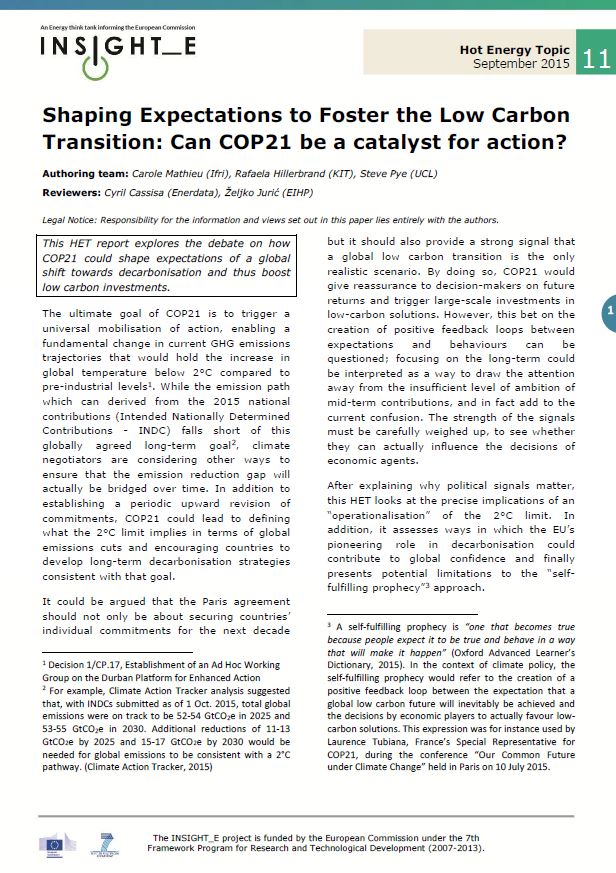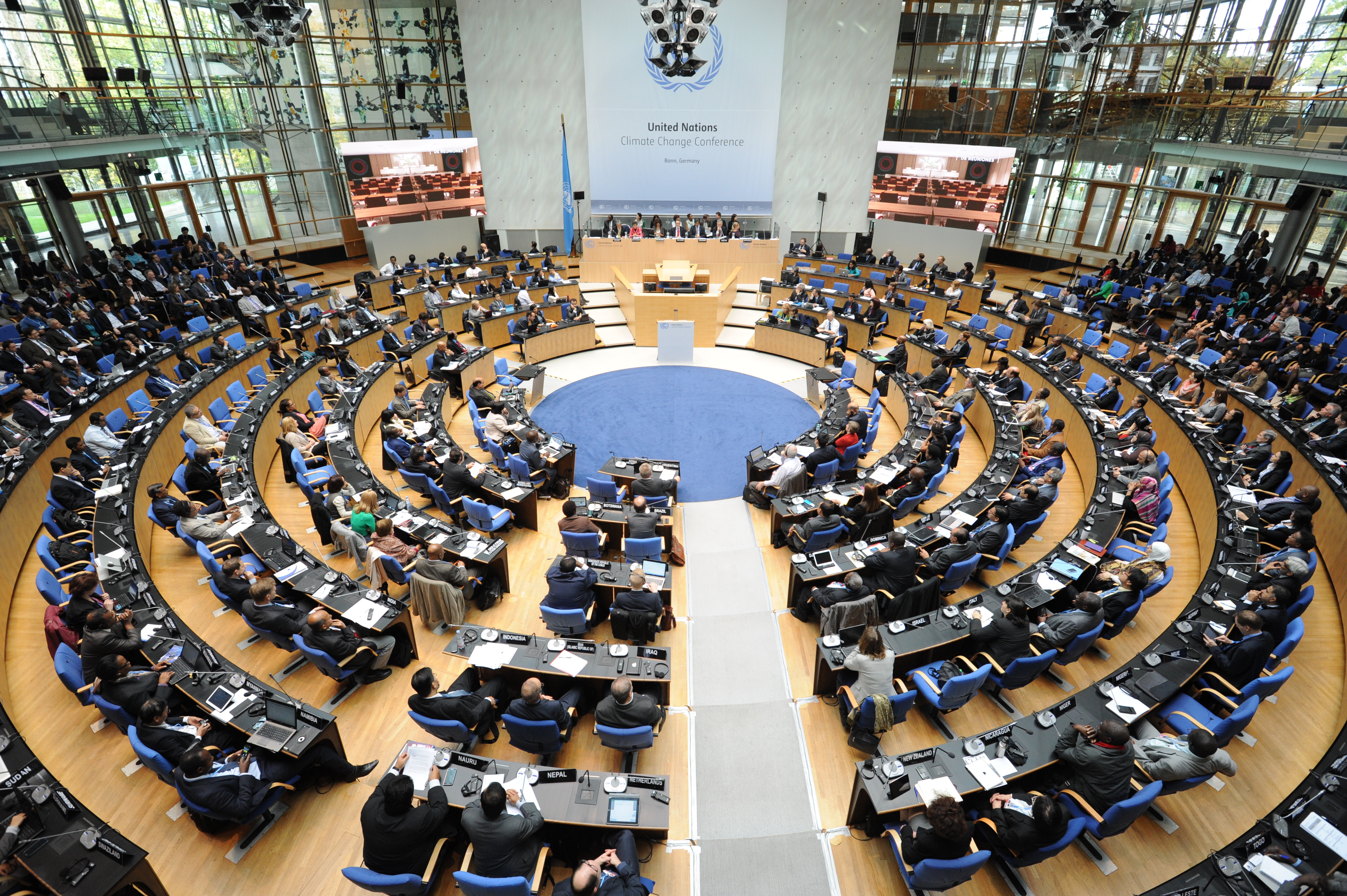Shaping Expectations to Foster the Low Carbon Transition: Can COP21 be a catalyst for action?

This report explores the debate on how COP21 could shape expectations of a global shift towards decarbonisation and thus boost low carbon investments.

The ultimate goal of COP21 is to trigger a universal mobilisation of action, enabling a fundamental change in current GHG emissions trajectories that would hold the increase in global temperature below 2°C compared to pre-industrial levels1. While the emission path which can derived from the 2015 national contributions (Intended Nationally Determined Contributions - INDC) falls short of this globally agreed long-term goal2, climate negotiators are considering other ways to ensure that the emission reduction gap will actually be bridged over time.
In addition to establishing a periodic upward revision of commitments, COP21 could lead to defining what the 2°C limit implies in terms of global emissions cuts and encouraging countries to develop long-term decarbonisation strategies consistent with that goal. It could be argued that the Paris agreement should not only be about securing countries’ individual commitments for the next decade but it should also provide a strong signal that a global low carbon transition is the only realistic scenario. By doing so, COP21 would give reassurance to decision-makers on future returns and trigger large-scale investments in low-carbon solutions.
However, this bet on the creation of positive feedback loops between expectations and behaviours can be questioned; focusing on the long-term could be interpreted as a way to draw the attention
away from the insufficient level of ambition of mid-term contributions, and in fact add to the current confusion. The strength of the signals must be carefully weighed up, to see whether they can actually influence the decisions of economic agents.
After explaining why political signals matter, this HET looks at the precise implications of an “operationalisation” of the 2°C limit. In addition, it assesses ways in which the EU’s pioneering role in decarbonisation could contribute to global confidence and finally presents potential limitations to the “selffulfilling prophecy” approach.
Download the full analysis
This page contains only a summary of our work. If you would like to have access to all the information from our research on the subject, you can download the full version in PDF format.
Shaping Expectations to Foster the Low Carbon Transition: Can COP21 be a catalyst for action?








